Crete is the birthplace of the first European civilization, the Minoan, which flourished between 3000 BC and 1200 BC mainly in Central and Eastern Crete. Even today, the majestic palaces of Knossos, Phaestus, Malia, Zakros, Tylissos, Arhanes, Monastiraki, Galatas, Kydonia and the luxurious mansions at Agia Triada, Zominthos, Amnisos, Makrigialos, Vathipetro and Nerokouros reflect the splendor of the Minoan civilization through architectural, pottery, jewelry and painting masterpieces.
The Minoan fleet, the strongest of its era, as evidenced by several findings in the Mediterranean, brought wealth to Crete from the trade of the famous Cretan cypress and agricultural products. Built in large yards, such as the shipyard of Agii Theodori at Vathianos Kambos, ships were loaded with timber, honey, wine, pottery and olive oil from the ports of Dia, Katsambas, Komos, Zakros, Psira, Mochlos, Niros, Petras, sailing towards all directions of the Mediterranean as far as Scandinavia.
Women were equal to men and took part in all religious ceremonies, in sports, hunting, theater, dance, etc. Masterpieces of building architecture, painting, sculpture and goldsmithing continue to inspire even modern civilization. Linear A and Linear B Scripts remind of the Egyptian hieroglyphics, but they were original Greek scripts. Even today, the disc of Phaestus is one of the most famous mysteries of archeology and deciphering of its symbols remains a riddle.
The worship of deities such as the Mother Goddess of fertility, the Mistress of the Animals, protector of cities, the household, the harvest, and the underworld dominated the religious tradition of the Minoans, who used many caves and mountain peaks as places of worship. Pilgrims from all over the island ascended to the peak sanctuaries of Youchtas and the cave of Hosto Nero to offer their votives, such as Minoan inscriptions or clay idols. Peak sanctuaries were also hosted atop summits Kofinas, Vrysinas, Petsofas, Traostalos, Karfi, etc. The Diktaean, Idaean and Kamares Caves also played a prominent role in the worship of gods.
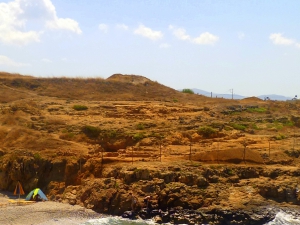
The archaeological site at hill Kefali of St. Anthony or Kremasma is situated next to the sea, between the beaches Avlaki and Boufos. This point offers very good view of the canyon Selinari, which was the passage to East Crete. The excavations began in 1960 by the archaeologist Kostas Davaras and continued long after by the School of Archaeology of Belgium.
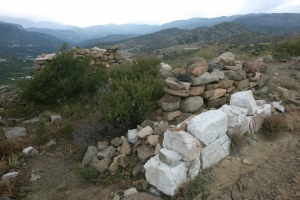
The unknown Minoan settlement of Pirgos is located shortly east of the coastal village of Myrtos, by Ierapetra, on a low hill overlooking the east bank of the River Krygios (Cold). It is located on a position overlooking the sea (south) and the forested mountains of Dikti (north) and was selected for settlement by the Minoans ,after leaving the nearby peak of Fournou Kefali. The settlement flourished from 2200 to 1450BC.
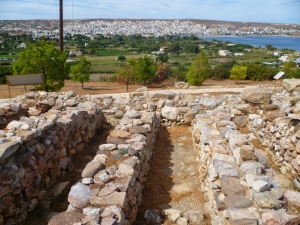
The Minoan settlement of Petras was built on a low hill near the present city of Sitia. It is believed by many researchers that this was the site of ancient Etea or Etida, from where the sage Myson came from.
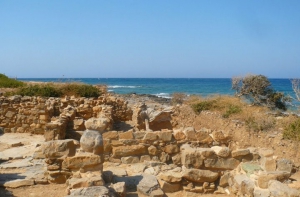
At Papadiokambos archaeologists have identified a Minoan house of fishermen and farmers covering 130 square meters, which has provided them with great information about the diet of the Minoans. It seems that the house was destroyed while the housewiveswere cooking waiting for their men,but they were lucky to escape alive (but hungry). But the family dog had a bad fortune, as he was found below the collapsed roofs.
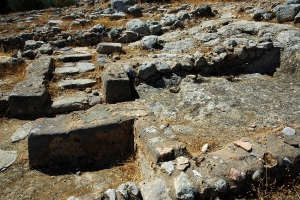
The Minoan settlement of Vasiliki is located across the exit of the gorge of Ha and near the Minoan settlement of Gournia, at an elevated point that controlled the valley of Ierapetra.
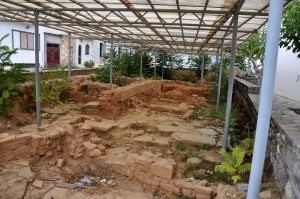
At Kastelli Pediada we meet traces of a settlement that flourished in the Minoan Era and was built since the Neolithic Period. The settlement had developed around a central two-story building of large dimensions, the architectural remains of which are visible today in the square of St. George.
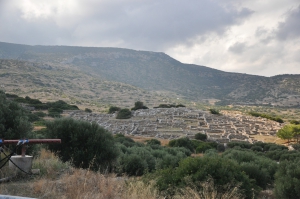
The archaeological site of Gournia is located on a hill west of Pachia Ammos, near the road connecting Agios Nikolaos to Ierapetra, 19km east of Agios Nikolaos. The city flourished in the Minoan period and is the most complete excavated Minoan town in Crete. Because of its good conservation, it was named as the "Pompeii of Crete". The excavation of Gournia was implemented by an American Archaeology Group, headed by Harriet Boyd, in 1901-1904.
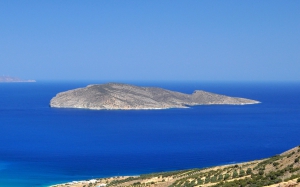
Psira is a small uninhabited islet located 1 mile north of Tholos beach, situated at the northeastern edge of the Gulf of Mirabello. In Psira a Minoan settlement of 15-20 acres has been found, being one of the most important sites in Crete.












































































